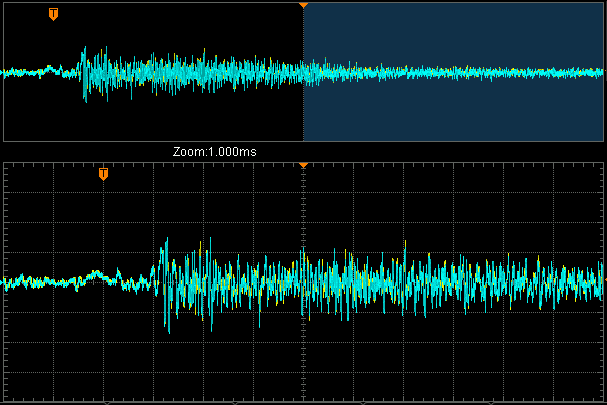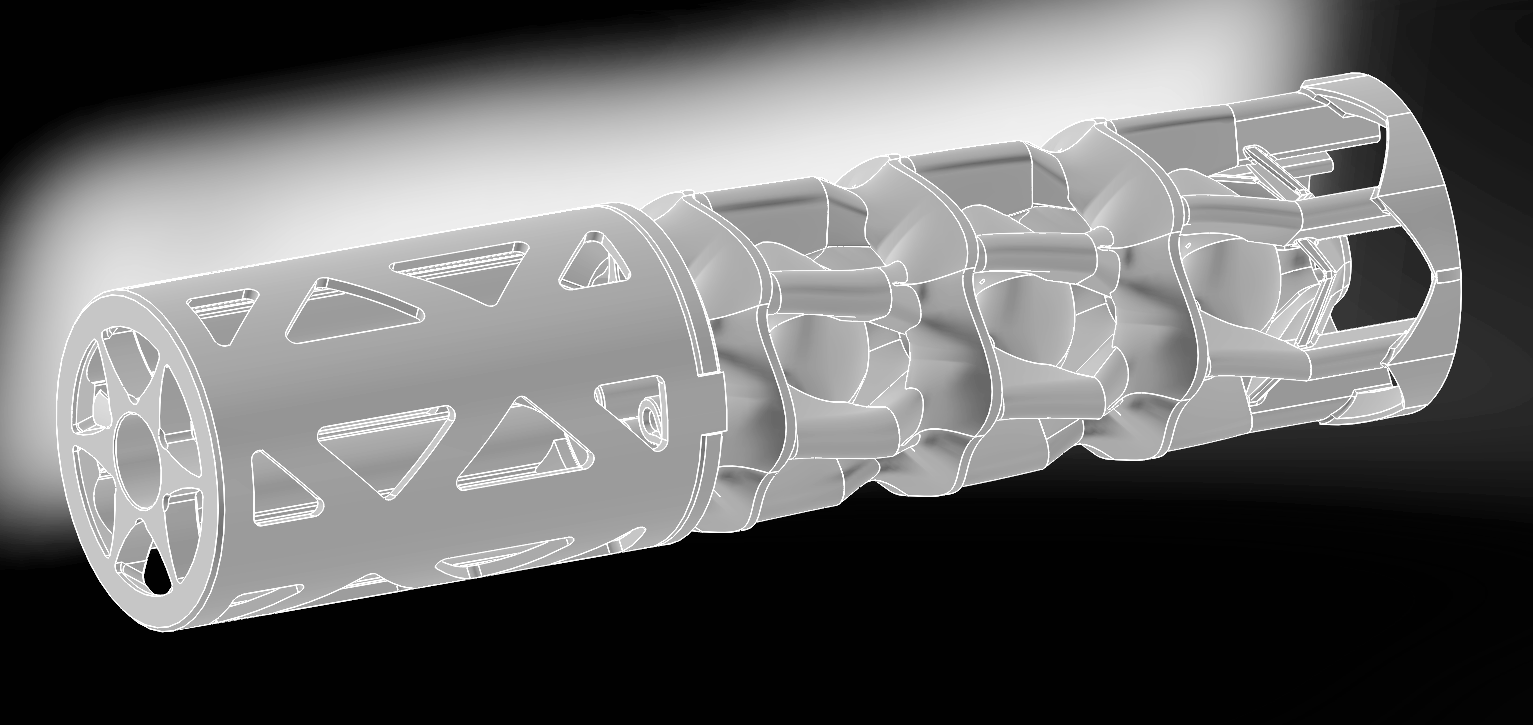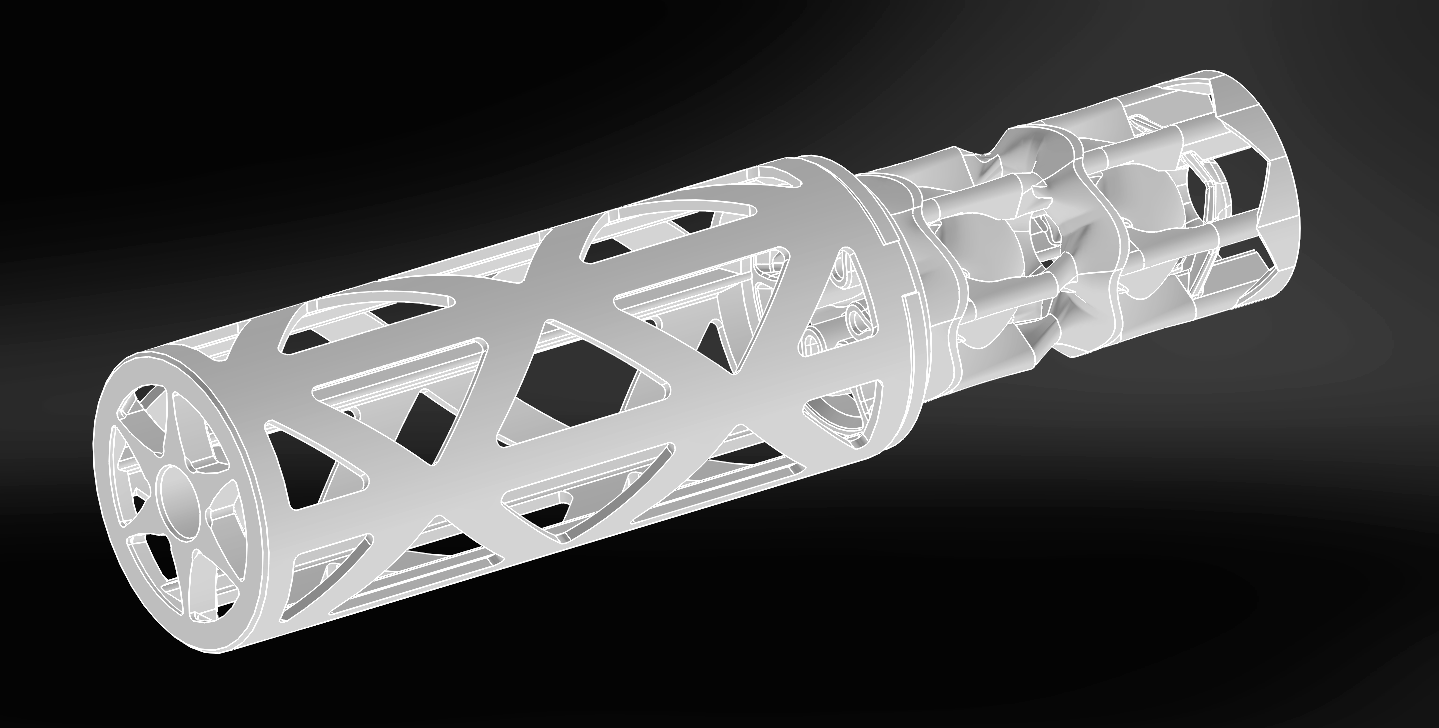Airgun Moderator Design, Performance, and Development - The Falx (part 15)
Silent Thunder Ordnance
Catch the previous episode HERE.
So first off I want to thank all you crazy people for harassing me to get your hands on, not just a handful of these crazy experimental moderators, but enough of them that you’re actually creating production problems at Silent Thunder Ordnance. When I started I had no idea there was this sort of interest in moderator design and experimentation, it is a pretty fringe nerdy subject , so from all of us to all of you THANK YOU!
If you’ll forgive a little nostalgic reminiscence, I started this whole thing a year and a half ago when I got a brand shiny new FX Crown, which was a lot louder than I wanted, and I foolishly thought I could build a better mousetrap. People started emailing in asking to try one. At first I was just giving them away, the whole thing was just a crazy experiment after all, but that quickly became untenable as they were too expensive and time consuming to produce to just give away in such numbers. So we listed them, secretly, so people could throw a little cash in the hat if they wanted to participate in the experiment. And now this project has outgrown that. It is time to build out something scalable, upgradeable, and with some of the production bells and whistles. It’ll all still be cutting edge and experimental, but key is that it will be modular/upgradeable.
So what does this mean going forward? Well, a couple things. First it means all the carbon moderators are being shelved. All this time I’d been making them by hand, one at a time, which is a surprisingly labor intensive process. It simply wasn’t sustainable.
The second, more important, thing it means going forward though is a new moderator: the Falx. This design is intended to carry all my core principles of light weight, air stripping, flow delaying, and sound damping, which were developed in the carbon moderators, and carry them over to a semi-modular aluminum moderator in the Gladius footprint. This comes with a whole host of advantages. I’ve been working, for a year now and almost entirely unsuccessfully, on a modular moderator design. I sometimes get comments about how easy I make moderator development look. I understand how people get that impression from these blog posts, after all I usually blend a handful of interesting failures in with a few successes, but what you don’t see are often weeks or even months of experiments all of which end in failure and I have absolutely no idea why. Sometimes some thing just doesn’t work out and there is no clear reason. Even the Falx, which rides that line of too-large-tube-diameter, I’d been grinding away at totally unsuccessfully for months. And I don’t mean a little unsuccessfully, I mean producing peaks in the 150+ range on the .22 Crown level of this is hilariously not f*cking working, and having absolutely no idea why. Likewise I also don’t post my incremental tweaks and changes, where moving an aspect a mm or two in one direction or another creates a small gain. Point is there is a lot of grinding and a LOT of inexplicable failure which just doesn’t make for riveting reading. So too was it with truly modular airgun moderators, ones where sections could be taken separately and attached. In the end, it worked, but the results were bigger, heavier, more difficult to produce, and would have been more expensive. Why buy one moderator when you can buy four modular sections at four times the price? Yeah, didn’t make sense to me either. The Falx became my compromise, I call it modular but it is only really “semi-modular” in that the footprint remains the same but I am able to pull an entire core, or core section, out and replace it with another. The semantics of whether or not this counts I leave up to you, but you’ll see me refer to it both ways going forward. Sorry.
This modularity gives me a key advantage though when it comes to moderator development, and you all key benefits when it comes to their use. The out-going composite moderators used a monocore system, caps are held together by a core which is held in tension. This was an elegant solution, but limited space and design elements. Critically, it meant every time I wanted to test something, I had to build the entire moderator. With threaded end caps in an aluminum tube, the core no longer needs to be held in tension. This frees me to make multi-part cores which are modular, serviceable, replaceable, and upgradeable. I can now simply swap internal components in testing, allowing quicker and easier assessment of different design elements. Also things like true floating dampers, multi-axis chambers, and an even wider variety of materials are, not just possible, but utilized to make the Falx even quieter than its all-composite brethren. This is, simply put, the quietest moderator design I’ve ever built, and I’m not stopping here. As new revs. come out, users who want to upgrade will be able to send their units back and get the core swapped to the latest rev.
There is always a catch though, and this is true here as well. There is no getting around it, aluminum is heavier than composites. That said, I’ve done what I can to minimize it. Instead of increasing wall thickness and cost to allow machined designs on the outside of the tube, I opted for a thin smooth wall to maximize cross-sectional strength. For those looking for extra stylish flair, custom engraving is certainly a possibility. The result is a design which, while heavier than its all-composite counterparts at ~180 grams (varies by core), can still meet or beat the trend for mass-to-volume-ratio of other aluminum moderators on the market and absolutely monster it for mass-to-sound ratio.
So now, having gotten that sleazy sales pitch, how did I get here, and how does the Falx actually perform?
The lack of scalability of the carbon monocore designs was actually pretty clear pretty early on. So I started working on something I nickamed the Cerberus, named after the multi-headed-dog because it was meant to, not just solve the manufacturing problems, but sectioned and modular. Each module could be attached to another via what was initially taper mount via threads and what evolved into a taper-and-lug system to ensure concentricity was maintained. And this would mean, instead of being stuck with whatever performance/size envelopes I built something for, people could grab pieces to actually tune their moderators to their rifles. And this is a key thing I want to hover over, the idea that a moderator to perform optimally should be relatively tuned to the rifle. This isn’t so much the case with a typical “hair curlers and washer baffles” design as you’re essentially asking a question of size/weight vs. sound attenuation as sections are all identical, these gas diode moderators have measurably better performance on a rifle for which they’re optimized. So that is great, where the heck is it? Well as it turns out, in solving the old manufacturing problems I created a whole suite of new ones. After all who wants to buy one moderator when you can buy one in 5 parts for five times the price? I beavered away on this for ages before giving up. I think I’ve said this before, but for every test you see here there are dozens of failures that either aren’t interesting or I haven’t the foggiest idea why they didn’t work. And nobody wants to read that any more than I want to take the time to write it all up. Never the less, I think some of these designs are cool so for your perusal I post just a handful of them here.
This one is probably fairly obvious, it is the rifle mount end section. Notice that honeycomb though? That came about as I was trying to maximize strength and sound attenuation while playing with the 200FPE AAA Slayer. It worked great too, and this filtered down into the Brevitas design. Another clever little track was the primary air stripper/blast baffle. Rigidity increases exponentially with material thickness, the majority of the load is borne by the surfaces, and the neutral plane in theory does zero. This principle is used all the time, from I-beams to composites. I did it here with the blast baffle increasing strength substantially to tolerate the the Slayer’s violence while reducing weight and increasing internal volume/sound attenuation. Kind of a fringe application, but a nifty little trick none the less.
What is interesting here isn’t the gas diodes, but the wall section. I’m always looking for ways to make one thing do multiple jobs. What goes on inside a moderator is complex, sound and flow are mingled and act together, and if I’ve learned one thing it is that any attempt to JUST damp sound or delay flow will be met with failure, you must attach the problem holistically. So here I created a wall reinforcement that didn’t just increase tube strength, but had high acoustic impedance. In layman’s terms, it significantly reduces the sound wave returned by the moderator walls, while like the honeycomb increasing strength and internal volume. Three jobs in one.
This was a goofy little experiment, but it worked. You see diodes need to saturate to function. Think of it like a referee’s whistle. If you blow into it softly, the vortex of air won’t form and you won’t get any whistle. Once you reach a certain threshold though it works, and you can keep blowing harder and harder until veins are popping out of your neck and people nearby start moving away from you because you have the acoustic version of serious garlic breath. I digress. Point is diodes are similar in that they require a certain amount of air flow to “saturate” and begin to really function. Below that threshold they work pretty much like conical baffles. So what happens when your tube is too big and you can’t shrink it because it’d look goofy in a modular stack? Well build a tube inside a tube. I jokingly referred to this as mini-mouse, because it is the same concept as the Mus but scaled down to fit this proposed modular platform.
What is this mess? Well….. so diodes take up space in increments. Exceptions like the one above aside, that space is essentially determined by tube diameter. But what if they didn’t have to? Instead of building discrete diodes, create a single diode as a continuous spiral which folds over on itself again and again and again. Then you could pack precisely as much or as little diode section in as you wanted, and potentially pack them more tightly as well. That was the idea anyway, and this is what it looked like. It was a hell of a thing to design. I built it in this length because I wanted an apples-to-apples comparison against another matching “regular” diode section. Unfortunately it didn’t match it for performance, and I don’t know why. But that is okay, there are only about a million different parameters to tweak to figure out why. I may revisit this at some point.
Is there any relevance to this whatsoever? Well aside from a few elements of this ending up in the Brevitas, some lessons learned here made their way, or will make their way, into the Falx. It is all a big messy endless learning process. The biggest and most significant part here is that I wanted to keep this modularity moving forward and that in turn informed how I designed the Falx’s tube to maximize what I could do with it in future. So lets look at the Falx.
98.9 - Falx Moderate Flow rev.1 as tested on .30 cal 80FPE FX Crown.
So I’ve been playing around with what I’ve been calling Flow Factor, and I’ll explain that in more detail in a future blog post. The short version though is I created a simplified way to estimate what exactly you’re subjecting the moderator to. And, as it turns out, for this diode architecture, the .30 Crown sits on the edge between 2 and 3 diodes. This is where a working version of the spiral diode pictured above would probably have been ideal. But since I haven’t gotten that working yet, I opted for 3 diodes and beefed them up a bit as well. The sound profile also tapers reasonably quickly for the power level, and I chalk that up to the more efficient damping section. It makes this design sound quieter than it meters. I’ll talk a little more about this below.
49.6 - Falx Standard Flow rev.1 as tested on a .22 cal 32FPE FX Crown
I’m really quite chuffed to bits about this one. I never thought I was going to pull off a design which could beat the standard flow Pilum in the same 170mm external length, but here we are. There is actually less available length inside the Falx because of caps and threads and such. How did I manage it? The diodes got a few subtle tweaks, but the big one is the damping section, seen as the iso grid. Those fully floating dampers mentioned above? Yeah, they work. And I’ve got a whole bunch of ideas which I can’t wait to test that could potentially improve it further. The other big thing here is a better way to constrain the inner foam in the damping section. Previously that was integral to the monocore, as a series of load bearing (tension) legs and struts. Now though the center isn’t load bearing, which freed me up to use a larger number of very thin rods. This creates less impediment to the air and sound, so it can more readily enter the damping area. Thus it is quieter. The force is now borne by the iso grid at the perimeter.
And I want to bang on modularlity one last time here, because without it I’d have never figured this out. You see each little change to the damping section produces very small changes, and a lot of those changes are to the post-peak-section. Previously I’d have to build a whole new core for every configuration, and those small changes would have been lost in the noise of core-to-core variation. Here though I could keep the same tube, same diodes, same cap, same everything and change JUST the damping section. Little by little I built up ideas which worked, but just by a little. I could then exaggerate them and combine until enough little ideas that it could make a real impact. I’m thrilled. And this was forward compatible too, working well in the moderate flow Falx.
I like to end these blog posts with a look forward, what am I thinking about next and where am I going? And there are a couple things. I want to do a post about flow factor, how moderator tuning matters. I also want to continue tweaking the internals, obviously. Having a modular design, why stop just when you’re satisfied? So I’ll continue to beaver away at that, probably with increasingly bizarre ideas. And finally I want to play with the envelope a little more, or push the envelope if you’ll forgive the lame pun. But that is all for now. I hope you all enjoyed the read. :)









